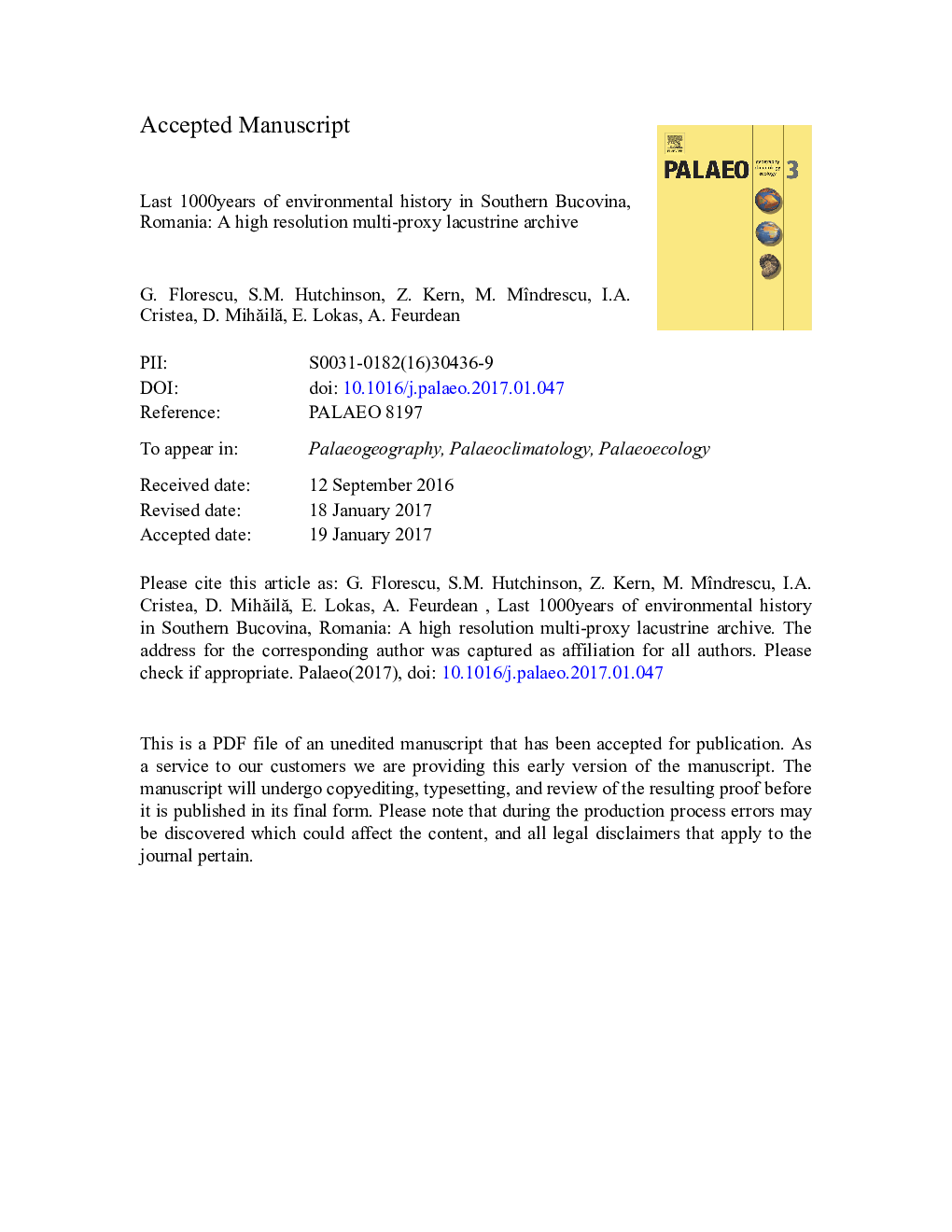| Article ID | Journal | Published Year | Pages | File Type |
|---|---|---|---|---|
| 5755690 | Palaeogeography, Palaeoclimatology, Palaeoecology | 2017 | 60 Pages |
Abstract
Geo-ecological and landscape change studies at a local scale are scarce in Central-Eastern Europe and particularly in Romania. However, this focus is directly relevant to ecosystems and humans as both are dependent on local environmental changes. We perform a high-resolution, multi-proxy analysis of physical and geochemical sediment properties, coupled to plant macrofossil, pollen and charcoal analysis at Iezerul Sadovei Lake and present the first palaeoenvironmental reconstruction from Bucovina Mountains, the north-eastern Romania. The sedimentary record, spanning the last 950Â years, is laminated throughout and reveals high intensity catchment responses to changes in hydrological conditions and human impact. Results show major landscape disturbances 950Â years ago and during the last 200Â years. The enhanced catchment instability from the onset of sedimentation to 1400Â CE was characterised by landsliding and subsequent erosion and related mainly to natural factors. However, the most recent (since c. 1800Â CE) environmental changes, i.e., deforestation, enhanced channel and slope erosion and lake in-filling are a consequence of direct human interventions. Changes in the composition and extent of forest cover were also driven by the combination of natural disturbances, climate variability and anthropogenic activities. From 1400Â CE, and more clearly over the last 200Â years, early successional and disturbed habitat taxa appeared to respond primarily to anthropogenic drivers, including forest management. The higher proportion of Abies alba (30%) and Fagus sylvatica (20%) in the local forest, and their dramatic decline, was recorded earlier (i.e., 1150Â CE and 1400Â CE respectively) than reported in other parts of the Romanian Carpathians. Using this palaeoenvironmental evidence as an analogue, projected climate changes, i.e., increased seasonal heavy precipitation and more frequent extreme events, superimposed on increasing human pressure are likely to lead to the destabilisation of the catchment through erosion and possible reactivation of landslides.
Keywords
Related Topics
Physical Sciences and Engineering
Earth and Planetary Sciences
Earth-Surface Processes
Authors
G. Florescu, S.M. Hutchinson, Z. Kern, M. Mîndrescu, I.A. Cristea, D. MihÄilÄ, E. Åokas, A. Feurdean,
